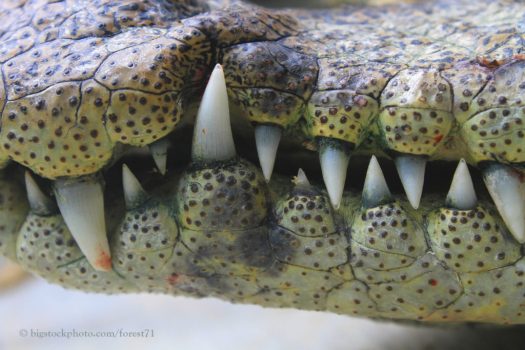
One of the things I love about science is that because of the nature of the discipline, errors eventually get corrected. Data on ancient animal butchering by humans just received a correction.
“In a field where researchers reap big rewards for publishing media-grabbing results in high-profile journals … there’s a push to publish extraordinary findings, but evolutionary researchers always have to weigh what is interesting versus what’s correct.” That statement was made by David Braun, an archaeologist at George Washington University in Washington D.C. He was responding to an announcement that what scientists thought was human butchering work with stone tools was apparently crocodile bites.
The date of tool use by early humans has been pushed back again and again as microscopic investigations looked at the shape of marks on the bones of horses and other animals. Carnivores like hyenas leave U-shaped marks on bones. Scientists had assumed that V-shaped incisions with internal ridges were caused by ancient animal butchering by humans using stone-age tools. The new finds show that crocodile bites can leave the same pattern on bones as stone butchering tools.
The traditional and biblical views of early humans show that they were gatherers and that butchering animals came along sometime later. The picture of the real human history is based on the evidence, and it is a constantly changing picture. The picture gets modified as scientists discover new evidence. The model indicated by Scripture and the scientifically-accepted picture will get closer to agreement as new evidence comes to light, and old evidence is re-examined.
Data from Science News December 9, 2017, and the November 6 Proceedings of the National Academy of Sciences.
–John N. Clayton © 2017
Discover more from DOES GOD EXIST? TODAY
Subscribe to get the latest posts sent to your email.
